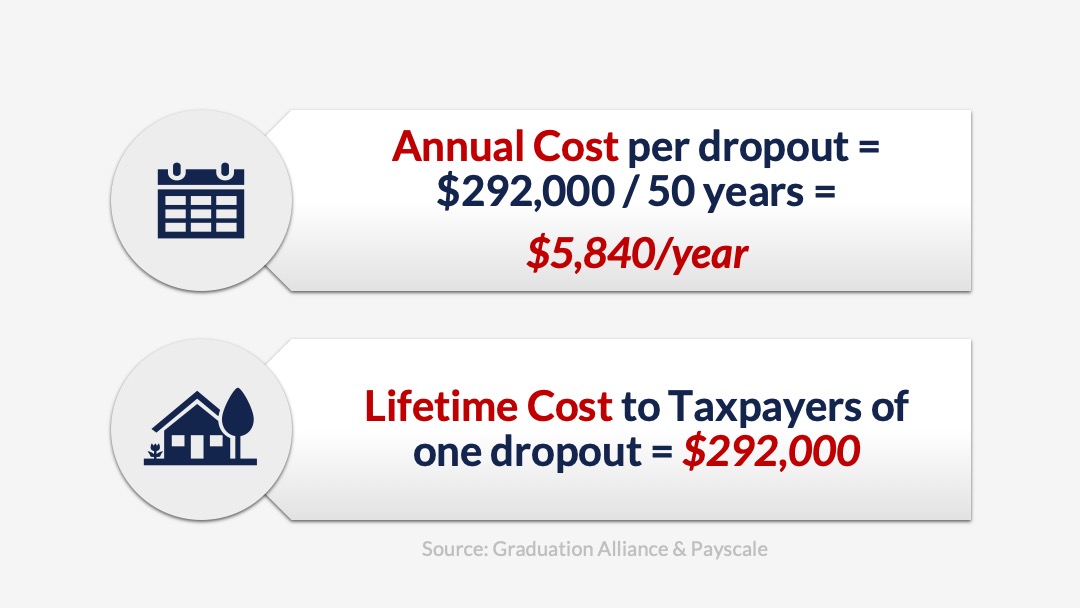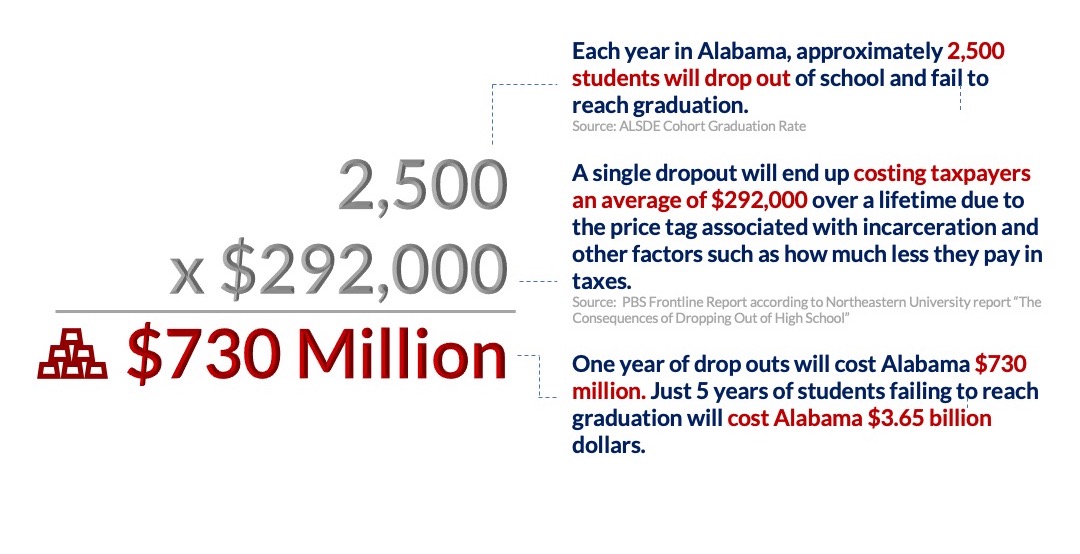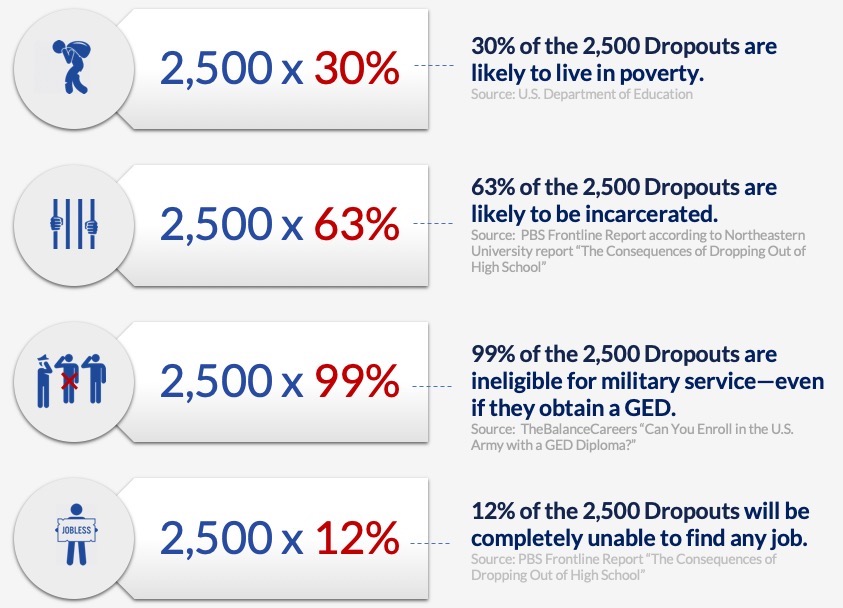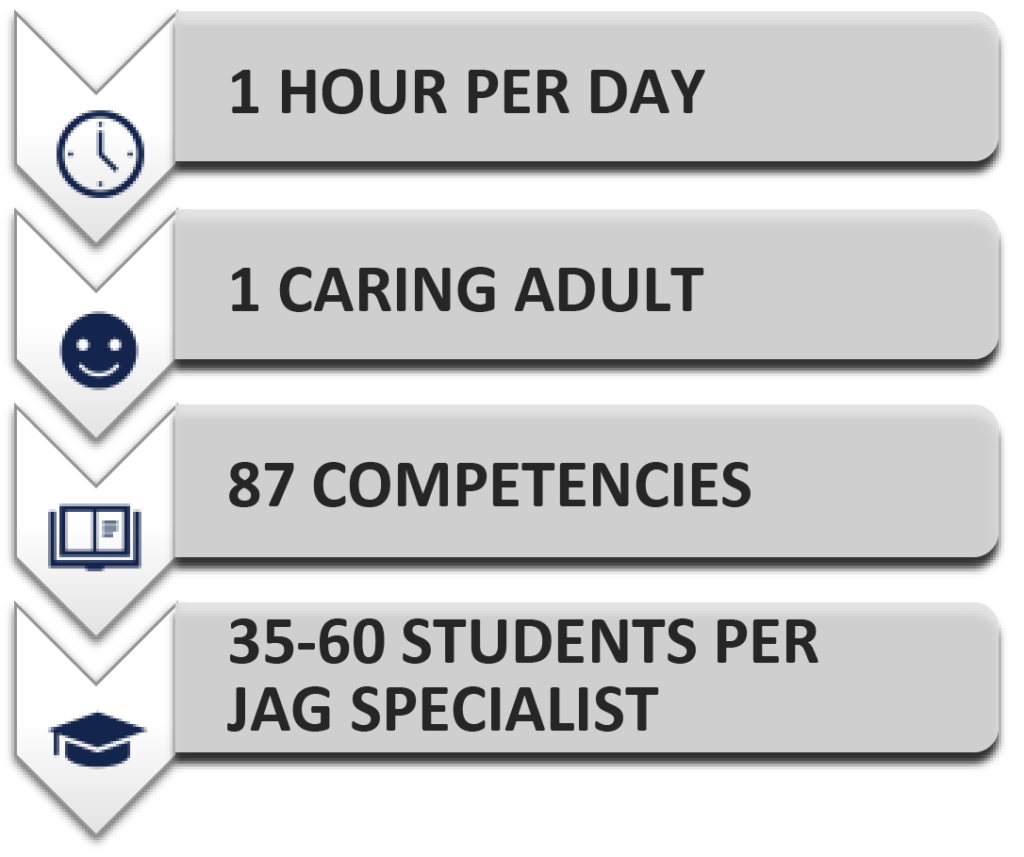The Lifetime Cost to Taxpayers of One Dropout is $292,000
Every student that drops out of high school is 63% more likely to be incarcerated. Dropouts are twice as likely to live in poverty and will experience unemployment rates at 12% or greater despite healthy economic conditions. Young women who give up on high school are nine times more likely to become young single mothers.
Even if dropouts escape incarceration, avoid significant likelihood of chronic health issues, and are able to get actually get a job, their earning power is diminished to $20,241 annually ($10,000 lower than high school graduate and $36,000 lower than a person with a bachelors).

Taxpayer Costs
Lifetime Cost to Taxpayers When Students Dropout

The Life of a High School Dropout
What Happens to Our Students Who Don’t Graduate?
How costly is the decision to drop out of high school? Consider a few figures about life without a diploma.
The average dropout can expect to earn an annual income of $20,241, which is over $10,000 less than the typical high school graduate and over $36,000 less than someone with a bachelor’s degree. Among those between the ages of 18 and 24, dropouts were more than twice as likely as college graduates to live in poverty. Dropouts experienced a poverty rate of 30.8 percent, while those with at least a bachelor’s degree had a poverty rate of 13.5 percent.
Of course, simply finding a job is also much more of a challenge for dropouts. The national unemployment rate measures at 12 percent among those without a high school degree. Among college graduates, it averages 4.1 percent.
The challenges hardly end there, though. Among dropouts between the ages of 16 and 24, incarceration rates are 63 times higher than among college graduates, as dropouts are exposed to many of the same socioeconomic forces that are often gateways to crime.



